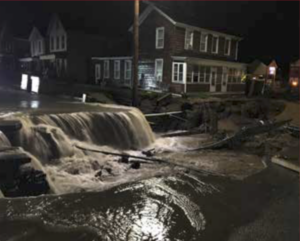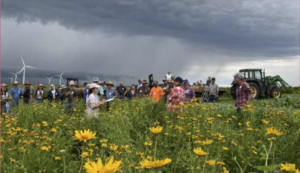Getting into Soil and Water 2020
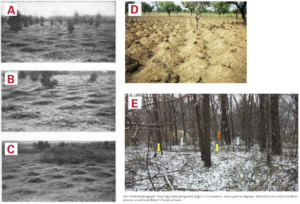
All agricultural cultures, including those of Indigenous peoples, depend on their relationship with soils to sustain their way of life. Soils are not only the foundation of human agriculture, but most Indigenous farming communities developed intimate knowledge of the relationships between plants, soils, and people based on generations of experience growing in a particular landscape. Even though many cultures grew crops on soil, they did not all have the same management practices. First, we will briefly explore traditional ecological knowledge of Indigenous peoples of North Americans with regards to soils. Second, we will explore how their traditional ecological knowledge might inform modern, mainstream agriculture.
Native American gardens were (and still are) interwoven deeply throughout the culture of each Native nation; stories and songs describe the crops being grown. The traditional ecological knowledge (see Box for definition) that Indigenous people developed through careful thought and observation of the natural world guided the way that each person utilized resources on the landscape when hunting, gathering, and farming (McGregor, 2004, Berkes et al., 2000). This knowledge is based through each generation, teaching young Native American gardeners to recognize the differences in cropping systems and which systems were most appropriate for a particular landscape.
Two common planting methods used by Native American gardeners, noted throughout archeological literature of the early twentieth century, include garden ridges and corn hills (Delabarre and Wilder, 1920; Figure 1). Corn hills are small rounded humps of soil that typically measured around eight inches high and up to 4 feet across. Depending on the community that was using them, early archeologists state that they might either be oriented in an organized fashion or haphazardly (Delabarre and Wilder, 1920). Garden ridges are tubular shaped, often found beside one another, creating a field of ridges. Sometimes these ridged fields were broken up by corn hills interspaced within them (Sasso, 2003). Some of these ancient ridged field sites spanned over 100 acres (Fowler, 1969).
Annual soil amendments to the garden ridges and corn hills were used to enhance soil fertility; this is important as these cropping areas were used multiple years in a row (Delabarre and Wilder, 1920). Native farmers used various soil amendments to build soil health, including river muck (Hurt, 1987), the use of fallow periods (Caduto, 1996), mulches (Wilken, 1972), and dead fish (Delabarre and Wilder, 1920). Native farmers’ use of biodiverse cropping systems, such as growing corn, squash, and beans (colloquially known as the three sisters) in the same space at the same time, also allowed for a highly productive agronomic system (Monaghan et al., 2014; Mt. Pleasant, 2011)
What Can We Learn?
Currently, in the Midwestern United States, corn (Zea mays) is king. However, this large grain crop has had an intimate relationship with humans for over 6,000 years (Piperno and Flannery, 2001). By harnessing its productive capacity, and that of soybean (Glycine max.), through crop breeding (new genetics) and management practices, we have made much progress with increasing yields. However, this progress has come with major problems with soil and water quality.
We now face soil erosion rates that are ten times or greater what would ‘naturally’ occur (Montgomery, 2007), soil organic matter levels that are on average 50% less than before cultivation (Gebhart et al., 1994; Guo and Gifford, 2002), and severely impaired local and downstream water quality (Rabalais et al., 2001; Sharpley et al., 1994; Turner and Rabalais, 2003). Where did we go wrong? Traditional ecological knowledge is emerging as a new concept that crosscuts across multiple disciplines – like anthropology and agronomy. Recent studies on TEK have shown its importance to informing modern, mainstream science. Some of these studies highlight the hubris of modern, mainstream science by showing that modern scientists sometimes “discover” something that has been known for centuries (Nicholas, 2018). But TEK shows potential for informing modern ecological or agricultural knowledge (Bonta et al., 2017; Bowman et al., 2015; Mantyka- Pringle et al., 2017).
A pertinent example of this ability of TEK to inform modern agriculture, and perhaps help alleviate some of the environmental issues it has created, is the Native American practice of Three Sisters Intercropping. Three Sisters intercropping combines corn, common beans (Phaseolus vulgaris), squash (Cucurbita moschata), and sometimes sunflowers (Helianthus annuus) – colloquially called the three sisters (or four sisters including sunflowers). These were typically planted on corn hills (Figure 1).
Currently, lack of crop diversity is one of the underlying factors for the soil and water quality issues in Midwestern US – which is dominated by corn and soybean (Glycine max.) production. Here is where TEK of Three Sisters Intercropping might inform modern agriculture. Crop Diversity is one of the NRCS’s ‘Principles of Soil Health’, and many farmers are reviving relay and intercropping across the Midwestern US. There is already evidence that Three Sisters polyculture increased crop yield (Zhang et al., 2014). It is likely that the ecological interactions among corn, beans, and squash could help to advance modern intercropping – not only for enhanced yields – but also making for a more regenerative and sustainable agricultural future.
Derrick Kapayou
Graduate Student Anthropology, Iowa State University
Christina Gish-Hill, PhD
Associate Professor Department of World Languages and Cultures, Iowa State University
Marshall McDaniel, PhD
Assistant Professor Department of Agronomy, Iowa State University
References:
Berkes, F., & Usher, P. J. 2000. Sacred knowledge, traditional ecological knowledge & resource management. Arctic, 53(2), 198.
Bonta, M., Gosford, R., Eussen, D., Ferguson, N., Loveless, E., & Witwer, M. 2017. Intentional fire-spreading by “Firehawk” raptors in Northern Australia. Journal of Ethnobiology, 37(4), 700-719.
Bowman, D. M., Gibson, J., & Kondo, T. 2015. Outback palms: Aboriginal myth meets DNA analysis. Nature, 520(7545), 33.
Caduto, M. J., & Bruchac, J. 1996. Native american gardening: Stories, projects, and recipes for families. Fulcrum Publishing.
Delabarre, E. B., & Wilder, H. H. 1920. Indian corn-hills in Massachusetts. American Anthropologist, 22(3), 203-225.
Fowler, M. L. 1969. Middle Mississippian agricultural fields. American Antiquity, 34(4), 365-375.
Gebhart, D. L., Johnson, H. B., Mayeux, H. S., & Polley, H. W. 1994. The CRP increases soil organic carbon. Journal of Soil and Water Conservation, 49(5), 488-492.
Guo, L. B., & Gifford, R. M. 2002. Soil carbon stocks and land use change: a meta analy- sis. Global change biology, 8(4), 345-360.
Hurt, R.D. 1987. Indian Agriculture in America, Prehistory to Present. Lawrence: Uni- versity Press of Kansas.
Zhang, C., Postma, J. A., York, L. M., & Lynch, J. P. 2014. Root foraging elicits niche complementarity-dependent yield advantage in the ancient ‘three sisters’(maize/bean/ squash) polyculture. Annals of botany, 114(8), 1719-1733.
Mantyka-Pringle, C. S., Jardine, T. D., Bradford, L., Bharadwaj, L., Kythreotis, A. P., Fresque-Baxter, J., … & Lindenschmidt, K. E. 2017. Bridging science and traditional knowledge to assess cumulative impacts of stressors on ecosystem health. Environment international, 102, 125-137.
Mapio. 1985. Northern Ghana. https://mapio.net/pic/p-2441402/. Accessed 23 Dec. 2019
Montgomery, D. R. 2007. Soil erosion and agricultural sustainability. Proceedings of the National Academy of Sciences, 104(33), 13268-13272.
Mt. Pleasant, Jane. 2011. The paradox of plows and productivity: an agronomic compar- ison of cereal grain production under iroquois hoe culture and European plow culture in the seventeenth and eighteenth centuries. Agricultural History 85(4): 460-492.
Nicholas, G. 2018. It’s taken thousands of years, but Western science is finally catching up to Traditional Knowledge. The Conversation, 15.
Peterson, C. 2019. Personal Communication, August 27th, 2019.
Piperno, D. R., & Flannery, K. V. 2001. The earliest archaeological maize (Zea mays L.) from highland Mexico: new accelerator mass spectrometry dates and their implica- tions. Proceedings of the National Academy of Sciences, 98(4), 2101-2103.
Rabalais, N. N., Turner, R. E., & Wiseman, W. J. 2001. Hypoxia in the Gulf of Mexi-
co. Journal of Environmental Quality, 30(2), 320-329.
Sasso, R. F. 2003. Vestiges of ancient cultivation: The antiquity of garden beds and corn hills in Wisconsin. Midcontinental Journal of Archaeology, 195-231.
Sharpley, A. 1999. Agricultural phosphorus, water quality, and poultry production: Are they compatible?. Poultry Science, 78(5), 660-673.
Turner, R. E., & Rabalais, N. N. 2003. Linking landscape and water quality in the Mis- sissippi River basin for 200 years. Bioscience, 53(6), 563-572.
Wilken, G. C. 1976. Integrating forest and small-scale farm systems in Middle Ameri- ca. Agro-ecosystems, 3, 291-302.
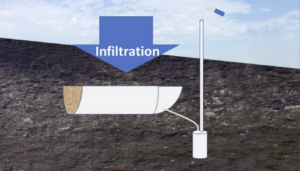
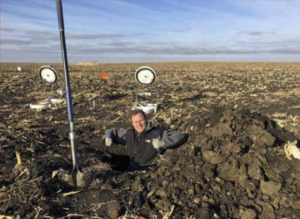

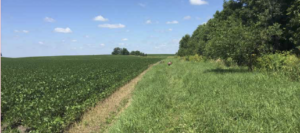
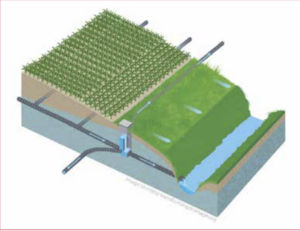
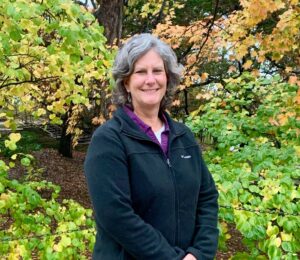 Laura Frescoln joined the Iowa Water Center in October as a grant specialist. Laura has 4 years of grant experience in the non-profit sector and is excited to apply her knowledge and skills at the Iowa Water Center.
Laura Frescoln joined the Iowa Water Center in October as a grant specialist. Laura has 4 years of grant experience in the non-profit sector and is excited to apply her knowledge and skills at the Iowa Water Center.
